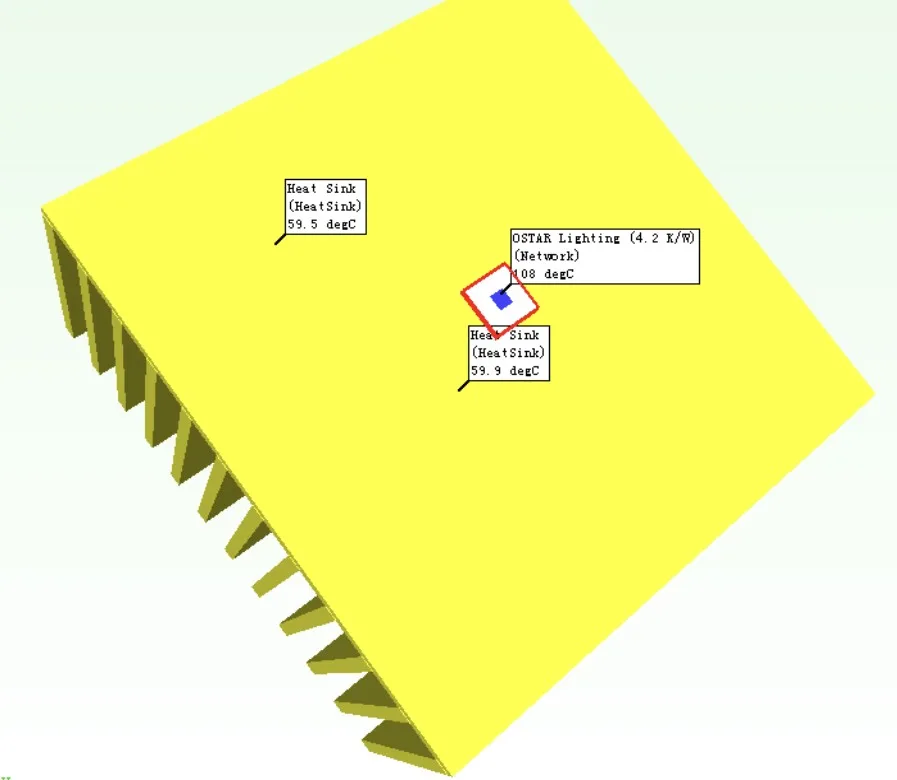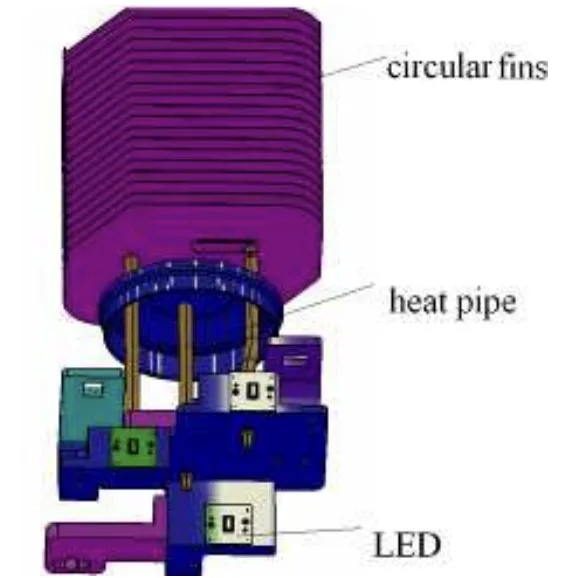This article introduces the paper "Heat Dissipation Design of High Power LED Headlamp".
1. Overview:
- Title: Heat Dissipation Design of High Power LED Headlamp
- Authors: Tiecheng Gao, Suying Yao, Yanjin Ai
- Year of Publication: 2012
- Journal/Conference: Advanced Materials Research Vols. 468-471
- Keywords: headlamp, Light emitting diode, Heat pipe
2. Background:
High-brightness white light-emitting diodes (LEDs) are very promising in many new illumination applications. LED light sources offer advantages such as long lifespan, fast response speed, environmental friendliness (mercury-free), and a color temperature (5500K-6000K) closer to natural light than xenon sources (4000K). The increasing use of LEDs in automotive lighting (interior lights, brake lamps, turn signals, taillights) reflects their efficiency and improved performance. However, the higher brightness requirements of headlamps have limited their widespread adoption in this application. This paper highlights the crucial need to address the heat dissipation challenges associated with high-power LEDs to enable their use in next-generation headlamps, pointing out the limitations of traditional air cooling with heat sinks in automotive applications due to high ambient temperatures, increased weight, and potential instability.
3. Research Objectives and Questions:
- Research Objective: To investigate effective cooling solutions for high-power LED headlamps and evaluate the performance of a heat pipe-based cooling system for potential application in automotive headlamps.
- Key Research Question: How effective is a heat pipe-based cooling system in managing the thermal performance of a high-power LED headlamp?
- Research Hypothesis: A heat pipe cooling system will be more effective in managing heat dissipation in high-power LED headlamps compared to traditional heat sink-based air cooling methods.
4. Methodology:
- Research Design: A combined simulation and experimental approach. Flotherm software was used to simulate the thermal performance of both heat sink and heat pipe cooling methods. A prototype LED headlamp was fabricated and tested to validate the simulation results.
- Data Collection Methods: Thermal data was collected through Flotherm simulations and experimental measurements on the fabricated prototype headlamp.
- Analytical Methods: Comparative analysis of simulation and experimental results to assess the effectiveness of the heat pipe cooling system.
- Research Subjects and Scope: The study focused on a high-power LED headlamp designed based on the structure of a specific sedan's combined headlamp. The LED light source comprised three linearly packaged LEDs with five chips each (4.5-5.5mm spread, 700mA operating current, 12W total power, >1000lm luminous flux, maximum junction temperature of 150°C, 120° Lambert light).
5. Main Findings:
- Key Findings: Air cooling with a heat sink proved unsuitable for automotive headlamp applications. Simulation results indicated a LED chip temperature of 108°C at an ambient temperature of 50°C, demonstrating that while functional, the large size and weight of the heat sink negatively impacted fuel economy and vehicle reliability. Forced cooling methods also present stability issues. In contrast, a heat pipe-based cooling system demonstrated significantly improved thermal management, reducing the junction temperature to 78°C. The experimental results from the prototype headlamp closely matched the simulation data.
- Statistical/Qualitative Analysis Results: Quantitative comparison of LED chip temperatures obtained from both Flotherm simulations (heat sink: 108°C, heat pipe: 78°C) and experimental measurements on the prototype headlamp validated the superior thermal performance of the heat pipe system.
- Data Interpretation: The large size and weight of heat sinks make them impractical for automotive headlamps due to space constraints and impact on fuel efficiency and vehicle stability. Heat pipes, with their high thermal conductivity, compact design, and controllable temperature capabilities, offer a more effective solution for managing heat in high-power LED applications.
- Figure List and Description:
- Figure 1: Photograph of the LED module.
- Figure 2: Flotherm simulation results of the LED with heat sink, showing heat sink temperatures of 59.5-59.9°C and a LED chip temperature of 108°C.
- Figure 3: Flotherm simulation model of the thermal management system using a heat pipe.
- Figure 4: Diagram illustrating the heat dissipation structure of the LED headlamp employing a combination of heat pipe and heat sink.


6. Conclusions and Discussion:
This research demonstrates the effectiveness of a heat pipe-based cooling system in resolving the heat dissipation challenges associated with high-power LEDs in automotive forward lighting. The strong agreement between simulation and experimental data validates the proposed design. However, limitations remain inherent in heat pipe radiators, indicating a need for further development towards more intelligent heat dissipation solutions.
7. Future Research:
Future research should focus on developing more advanced, intelligent heat dissipation methods to overcome the limitations of current heat pipe technology. Further investigation into the system's performance under various environmental conditions (temperature, humidity) is also warranted.
8. References Summary:
[1] Pearson, T., Mounier, E., Eloy, J.C., Jourdan, D., “Solid-state lighting in the automobile: concept,market timing and performance,” LEDs Magazine, pp.25-27, Apr. 2005.
[2] Stratford, J and Musters, A, “Insulated metal printed circuits a user-friendly revolution in power design, "Electronics Cooling, vol. 10, pp. 30-34, Nov. 2004
[3] Flomerics Ltd., FloThermTM 6.1 Instruction Manual, 2005.
[4] Y. Lai, N. Cordero, F. Barthel, F. Tebbe, J. Kuhn, R. Apfelbeck, D. Würtenberger,Liquid cooling of bright LEDs for automotive applications, in: Proc. of the Therminic 2006, pp. 80 – 85
[5] L. Kim, J.H. Choi, S.H. Jang, et al., Thermal analysis of LED array system with heat pipe, Thermochim. Acta 455 (2007) 21–25.
Copyright:
This summary is based on the paper "Heat Dissipation Design of High Power LED Headlamp" by Tiecheng Gao, Suying Yao, and Yanjin Ai.
Paper Source: 10.4028/www.scientific.net/AMR.468-471.2038
This summary is based on the above paper and its unauthorized commercial use is prohibited.
Copyright © 2023 CASTMAN. All rights reserved.